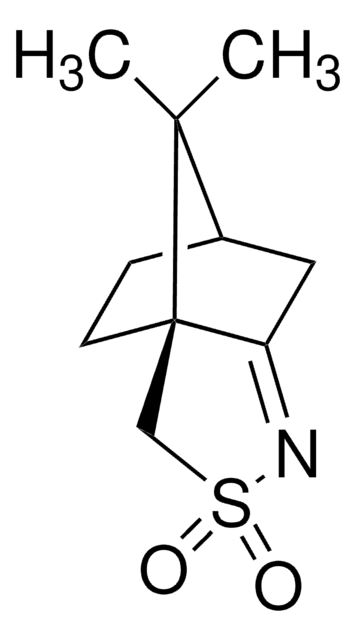V900539
Zimtaldehyd
Vetec™, reagent grade, 93%
Synonyme(s) :
3-Phenylprop-2-enal
About This Item
Produits recommandés
Qualité
reagent grade
Gamme de produits
Vetec™
Pureté
93%
Indice de réfraction
n20/D 1.621 (lit.)
Point d'ébullition
248 °C (lit.)
Densité
1.05 g/mL at 25 °C (lit.)
Chaîne SMILES
O=C\C=C\c1ccccc1
InChI
1S/C9H8O/c10-8-4-7-9-5-2-1-3-6-9/h1-8H/b7-4+
Clé InChI
KJPRLNWUNMBNBZ-QPJJXVBHSA-N
Vous recherchez des produits similaires ? Visite Guide de comparaison des produits
Informations légales
Mention d'avertissement
Warning
Mentions de danger
Conseils de prudence
Classification des risques
Acute Tox. 4 Dermal - Aquatic Chronic 3 - Eye Irrit. 2 - Skin Irrit. 2 - Skin Sens. 1
Code de la classe de stockage
10 - Combustible liquids
Classe de danger pour l'eau (WGK)
WGK 1
Point d'éclair (°F)
221.0 °F - Pensky-Martens closed cup
Point d'éclair (°C)
105 °C - Pensky-Martens closed cup
Certificats d'analyse (COA)
Recherchez un Certificats d'analyse (COA) en saisissant le numéro de lot du produit. Les numéros de lot figurent sur l'étiquette du produit après les mots "Lot" ou "Batch".
Déjà en possession de ce produit ?
Retrouvez la documentation relative aux produits que vous avez récemment achetés dans la Bibliothèque de documents.
Notre équipe de scientifiques dispose d'une expérience dans tous les secteurs de la recherche, notamment en sciences de la vie, science des matériaux, synthèse chimique, chromatographie, analyse et dans de nombreux autres domaines..
Contacter notre Service technique









